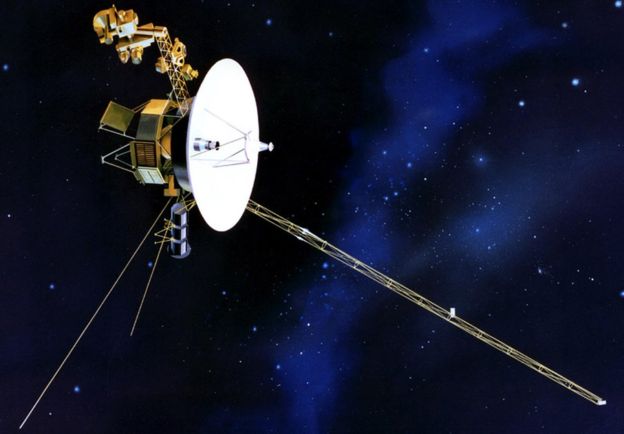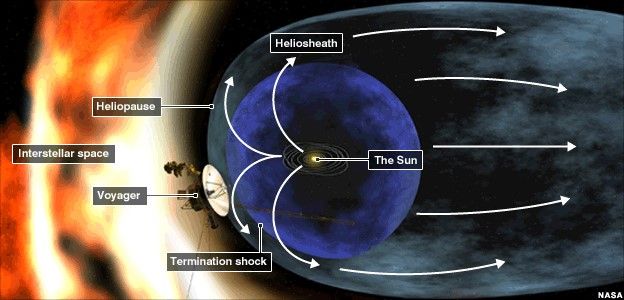East Antarctica glacial stronghold melting as seas warm
Nasa detects ice retreat probably linked to ocean changes in region once thought stable
Nasa detects ice retreat probably linked to ocean changes in region once thought stable
Scientists are releasing results of a decade’s worth of research that has uncovered a vast and mysterious world of microbes deep underground that could help explain how life began on Earth and how it might look on other planets.
The Voyager 2 probe, which left Earth in 1977, has become the second human-made object to leave our Solar System.
It was launched 16 days before its twin craft, Voyager 1, but that probe’s faster trajectory meant that it was in “the space between the stars” six years before Voyager 2.
The news was revealed at the American Geophysical Union (AGU) meeting in Washington.
And chief scientist on the mission, Prof Edward Stone, confirmed it.

He said both probes had now “made it into interstellar space” and that Voyager 2’s date of departure from the Solar System was 5 November 2018.
On that date, the steady stream of particles emitted from the Sun that were being detected by the probe suddenly dipped. This indicated that it had crossed the “heliopause” – the term for the outer edge of the Sun’s protective bubble of particles and magnetic field.
And while its twin craft beat it to this boundary, the US space agency says that Voyager 2 has a working instrument aboard that will provide “first-of-its-kind observations of the nature of this gateway into interstellar space”.
The probe’s present location is some 18 billion km (11 billion miles) from Earth. It is moving at roughly 54,000km/h (34,000mph). Voyager 1 is further and faster still, at 22 billion km and 61,000km/h.

The Voyagers were sent initially to study the outer planets, but then just kept on going.
Prof Stone said that at the start of the mission the team had no idea how long it would take them to reach the edge of the Sun’s protective bubble, or heliosphere.
“We didn’t know how large the bubble was, how long it would take to get there and if the space craft would last long enough,” he added. “Now we’re studying the very local interstellar medium.
“It’s a very exciting time in Voyager’s 41 year journey.”
Scientists define the Solar System in different ways, so Prof Stone has always been very careful not to use the exact phrase “leave the Solar System” in relation to his spacecraft. He is mindful that the Nasa probes still have to pass through the Oort cloud where there are comets gravitationally bound to the Sun, albeit very loosely.
But both Voyagers certainly are in a new, unexplored domain of space.
Decades and billions of kilometres. Voyager 1 departed Earth on 5 September 1977, a few days after its sister spacecraft, Voyager 2.
The pair’s primary objective was to survey the planets Jupiter, Saturn, Uranus and Neptune – a task they completed in 1989.
They were then steered towards deep space. It is expected that their plutonium power sources will eventually stop supplying electricity, at which point their instruments and their 20W transmitters will die.
The Voyager project manager, Suzanne Dodd told BBC News that she would like to see them both keep going until 2027.
“It would be super-exciting to have a 50-year mission still operating,” she added, describing the probes as “pioneers” of interstellar space.
“Every so often they phone home and say – ‘I’m still going. Don’t forget about me!'”

Voyager 1 will not approach another star for nearly 40,000 years, even though it is moving at such great speed. But it will be in orbit around the centre of our galaxy with all its stars for billions of years.
Never has the future of nuclear arms control seemed so uncertain.
Campaigners release map showing scale of pollution and damage to environment caused by small-scale miners
South Korean YouTube star Lina Bae expected some negative comments when she switched from posting make-up tutorials to stripping her face bare.
A storm spreading snow, sleet and freezing rain across a wide swath of the South has millions of people in its path, raising the threat of immobilizing snowfalls, icy roads and possible power outages.
Modi government urged to build temple at site of mosque razed by Hindu mob in 1992
Prime minister Charles Michel says country could come to standstill in event of early elections
The spectacle of a spotted eel stuck in an endangered Hawaiian monk seal’s nose has left researchers scratching their heads.